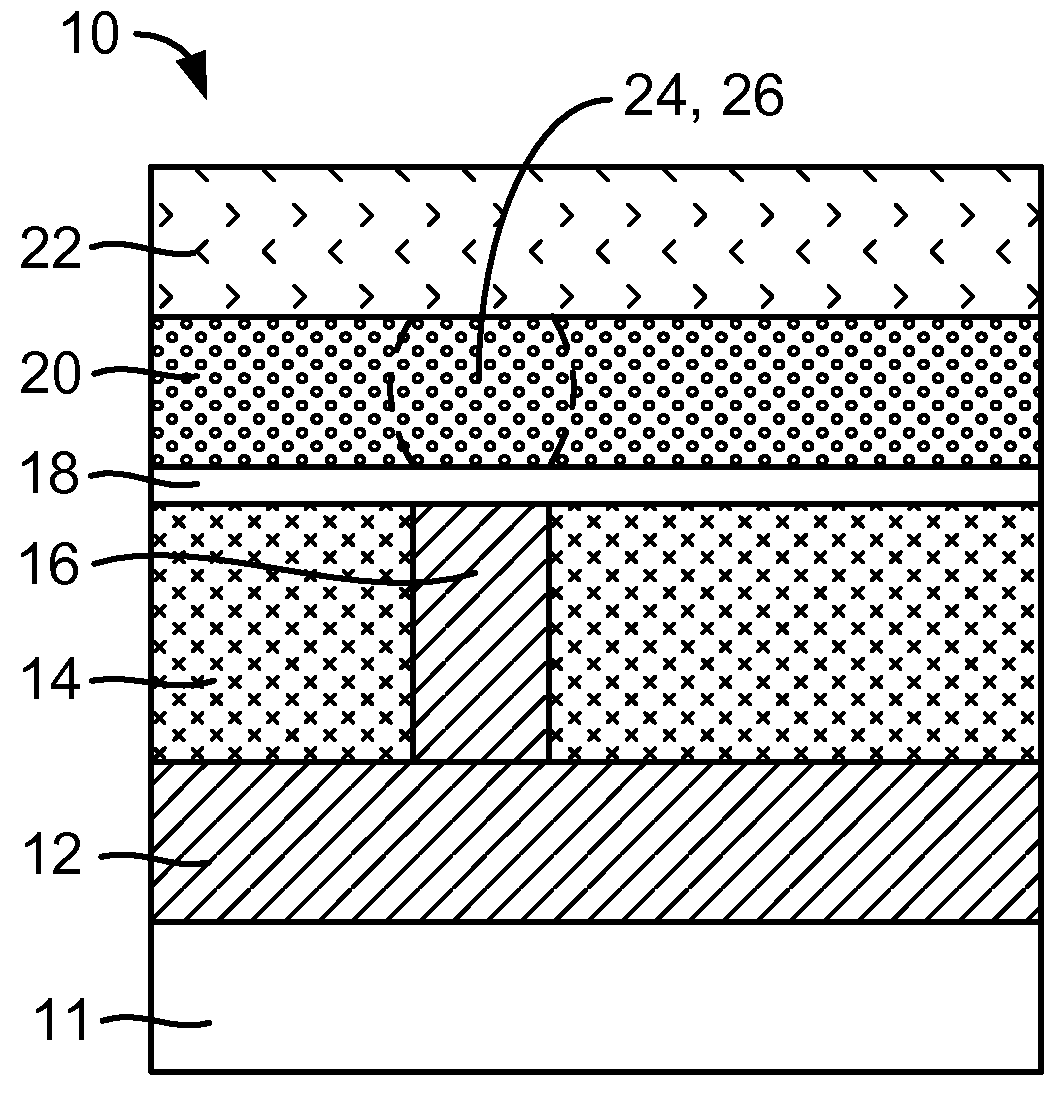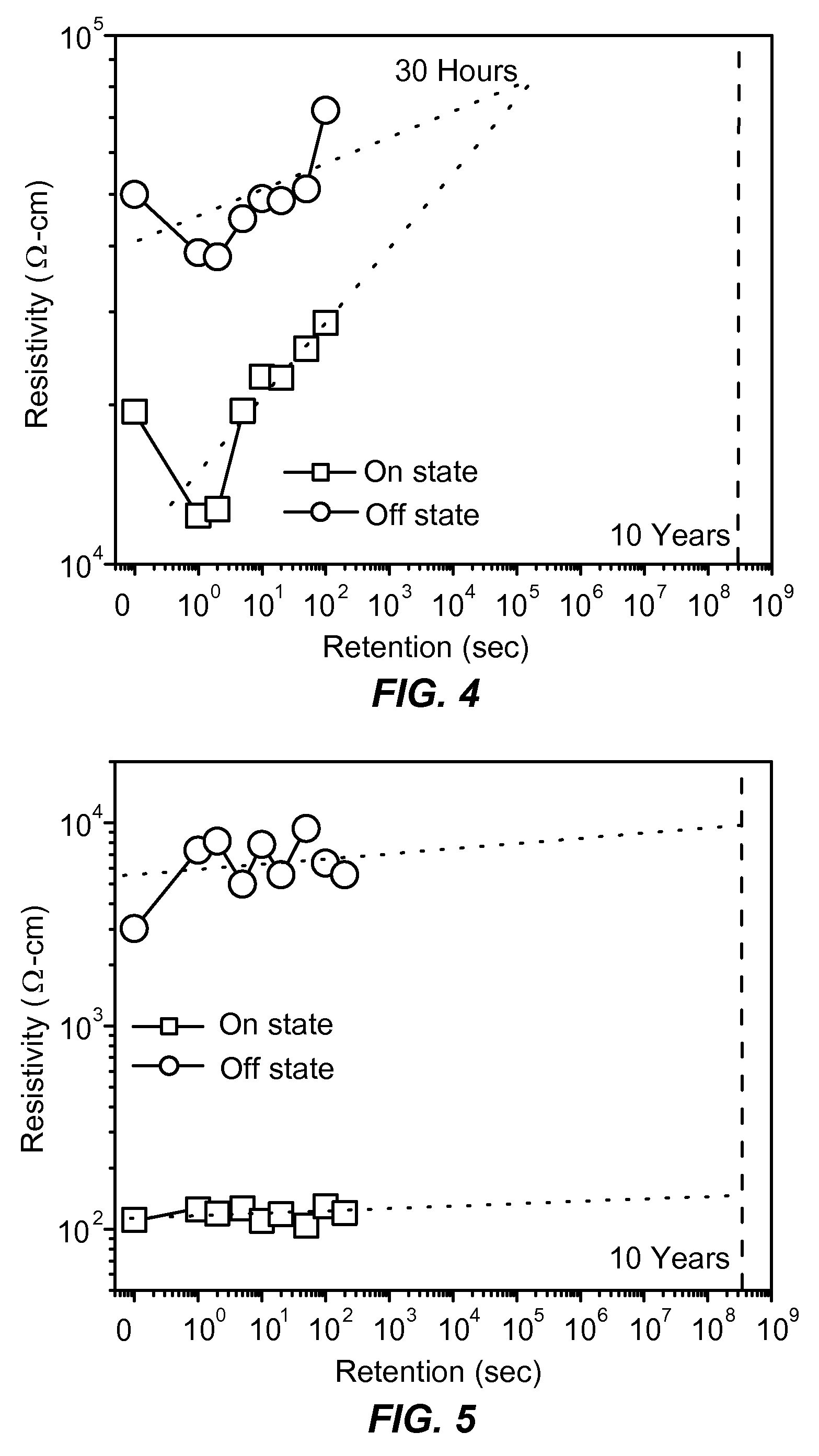Resistive memory structure with buffer layer
a memory structure and resistive technology, applied in the field of resistive memory structure with buffer layer, can solve the problems of relatively large memory cell size, copper bottom electrode complicating the erasure of memory cells, etc., and achieve the effect of improving performan
- Summary
- Abstract
- Description
- Claims
- Application Information
AI Technical Summary
Benefits of technology
Problems solved by technology
Method used
Image
Examples
Embodiment Construction
[0026]A description of structural embodiments and methods of the present invention is provided with reference to FIGS. 1-9. It is to be understood that there is no intention to limit the invention to the specifically disclosed embodiments but that the invention may be practiced using other features, elements, methods and embodiments. Like elements in various embodiments are commonly referred to with like reference numerals.
[0027]FIG. 1 is a simplified cross-sectional view of a first example of a resistive memory structure 10. Structure 10 includes a substrate 11 upon which an AlCu stack 12 is formed. A dielectric layer 14, typically silicon dioxide, is formed over stack 12. A bottom electrode 16 extends from stack 12 completely through dielectric layer 14. Bottom electrode 16 is an electrically conductive element. For example, bottom electrode 16 may be a drain terminal of an access transistor or a terminal of a diode. A buffer layer 18 is formed by, for example, down-stream plasma,...
PUM
 Login to View More
Login to View More Abstract
Description
Claims
Application Information
 Login to View More
Login to View More - R&D
- Intellectual Property
- Life Sciences
- Materials
- Tech Scout
- Unparalleled Data Quality
- Higher Quality Content
- 60% Fewer Hallucinations
Browse by: Latest US Patents, China's latest patents, Technical Efficacy Thesaurus, Application Domain, Technology Topic, Popular Technical Reports.
© 2025 PatSnap. All rights reserved.Legal|Privacy policy|Modern Slavery Act Transparency Statement|Sitemap|About US| Contact US: help@patsnap.com



